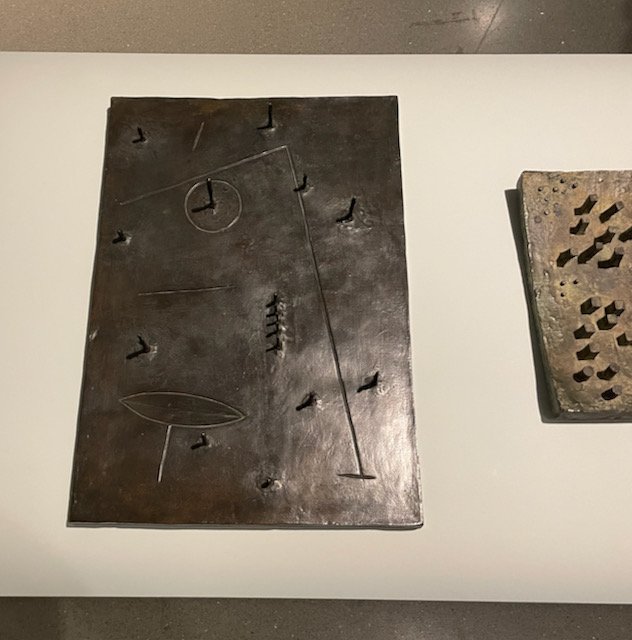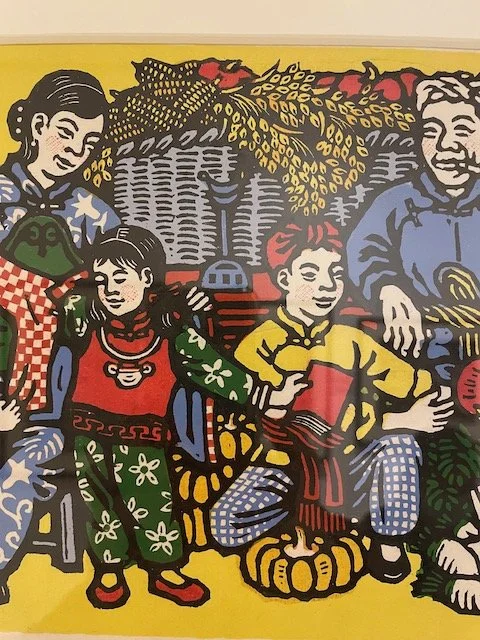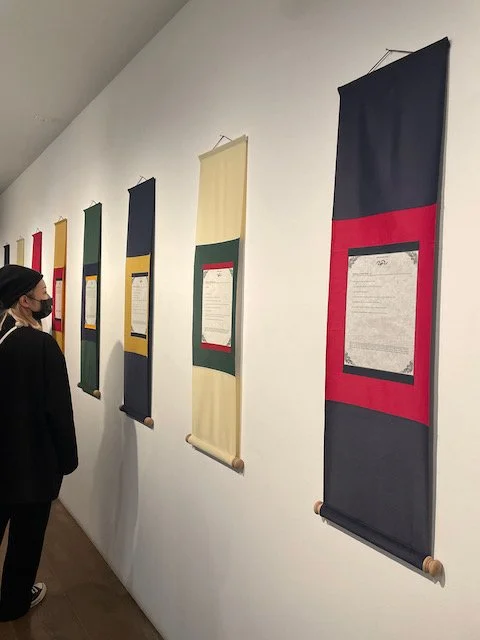Post War Modern: New Art in Britain @ The Barbican
Three slabs of thin bronze rest on a plinth about knee-high. It takes you a minute to realise what they are. Out of context these slabs of bronze by William Turnbull appear as abstract relief sculptures. The aerial view is thought to capture the flattened cities that underwent bombardment during WWII - a view which Turnbull would have experienced first hand while he was a pilot. Turnbull created these sculptures during the 1950s, but they feel relevant today with the current atrocities in Ukraine, and the satellite images that have emerged of flattened parts of the country.
This exhibition could not come at a worse time as it reminds us of the destruction and dislocation that many artists faced after the war. Fleeing their homeland to take refuge in Britain. This show is not about “British artists” during WWII. This is an exhibition about artists in Britain, making sense of feelings of isolation, alienation and grief that followed.
This exhibition proudly claims London-born Jewish artists Frank Auerbach and Leon Kossoff as British post-war artists. Kossoff’s parents were Ukrainian, and Auerbach’s were German. (Gustav Metzger is also included with this powerful duo however his work is less attention commanding.) Auerbach and Kossoff’s self-portraits are hung side-by-side, and their thickly built up urban landscapes spread across the gallery room which is dedicated to the pair. The visceral impasto achieved by both painters never disappoints.










